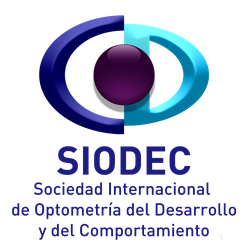Visual dysfunctions and their relationship with academic performance
Learning is a multifaceted process that involves various cognitive, emotional, and physical factors. Among these factors, vision plays a crucial role, as 80% of learning occurs through vision. In other words, the majority of the information we process for reading, writing, identifying objects, taking notes, or even interpreting graphs and maps directly depends on vision.
Therefore, vision problems not only affect the ability to see clearly but can also interfere with academic performance. We, as optometrists under the behavioral model, conduct optometric evaluations of visual information processing to detect visual problems and, using the appropriate tools such as lenses, prisms, or vision therapy, address or improve these issues so that they do not interfere with academic performance.
Many signs and symptoms of learning difficulties —such as lack of concentration, slow reading, lack of interest in visual tasks, or difficulty keeping up in the classroom— are often similar to those caused by visual disorders.
These include problems such as:
- Uncorrected refractive errors.
- Focusing problems (accommodation).
- Binocular dysfunction.
- Eye movement problems.
- Visual perception difficulties.
- Reading: Visual problems can cause difficulty in following lines of text, omitting and/or confusing letters or words, getting lost while reading, fatigue or tiredness, and difficulties with reading comprehension.
- Writing: Poor eye-hand coordination can affect good handwriting and legible writing.
- Attention: visual difficulties can be mistaken for lack of attention, as the student avoids uncomfortable visual activities.
- Fatigue and frustration: Visual problems can lead to frustration, loss of interest, and difficulties concentrating.
- Emotional impact: Unidentified difficulties can lead to frustration, low self-esteem, and avoidance behaviors towards school activities.
- Overall performance: fatigue, headaches, and excessive effort can reduce the time and quality of work that a student can produce.
Regular visual assessments for early detection: it is recommended to have periodic optometric check-ups to detect problems in a timely manner and identify specific needs before they significantly affect your performance.
Specific treatments:
- Use of appropriate lenses, prisms, or filters to improve visual performance.
- Visual therapy or rehabilitation to improve skills such as focus, eye movements, binocular vision, and visual perception.
3. Optimal learning environment: good lighting, ergonomic postures, and frequent breaks from screen use.
4. Information and education about the use of electronic devices.
5. Collaboration with educators: Informing teachers about the student's visual difficulties to adapt school activities according to their needs.
For this reason, conducting a complete optometric examination (not just refractive) is essential for children who are experiencing low academic performance. Many times, an undiagnosed vision problem can be mistaken for a learning disorder, leading to misunderstandings and delays in appropriate intervention. If visual problems are addressed in a timely manner, it is possible that academic performance may improve significantly, as the child will be able to access information more effectively and without the barriers imposed by an uncorrected vision problem.
In an interdisciplinary evaluation of the child, which generally includes cognitive, psychological, and pedagogical assessments, a more comprehensive examination should be included, an optometric examination of visual information processing. This will not only allow for the identification of potential vision problems but also provide the necessary tools to correct them and enhance the child's learning experience. By addressing these visual issues, it contributes to the child being able to reach their academic potential and develop their skills to the fullest.
